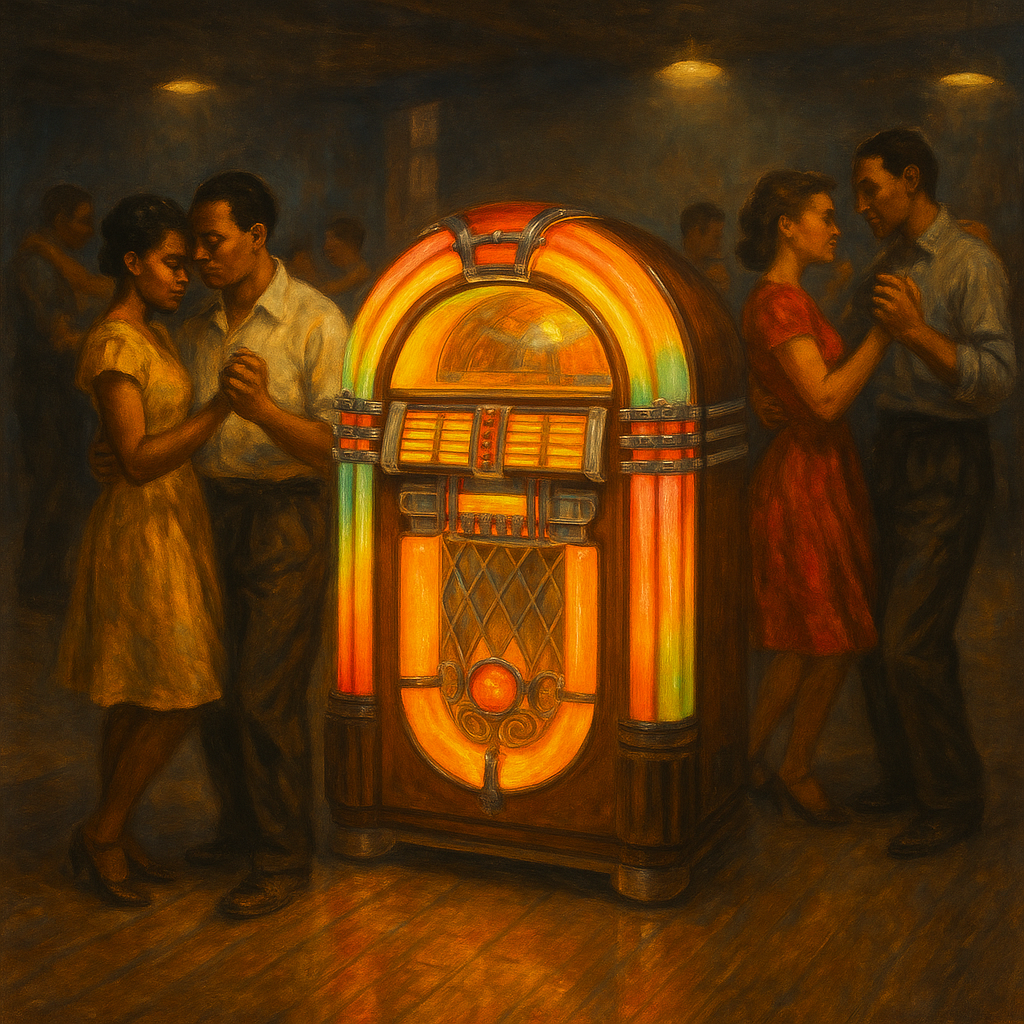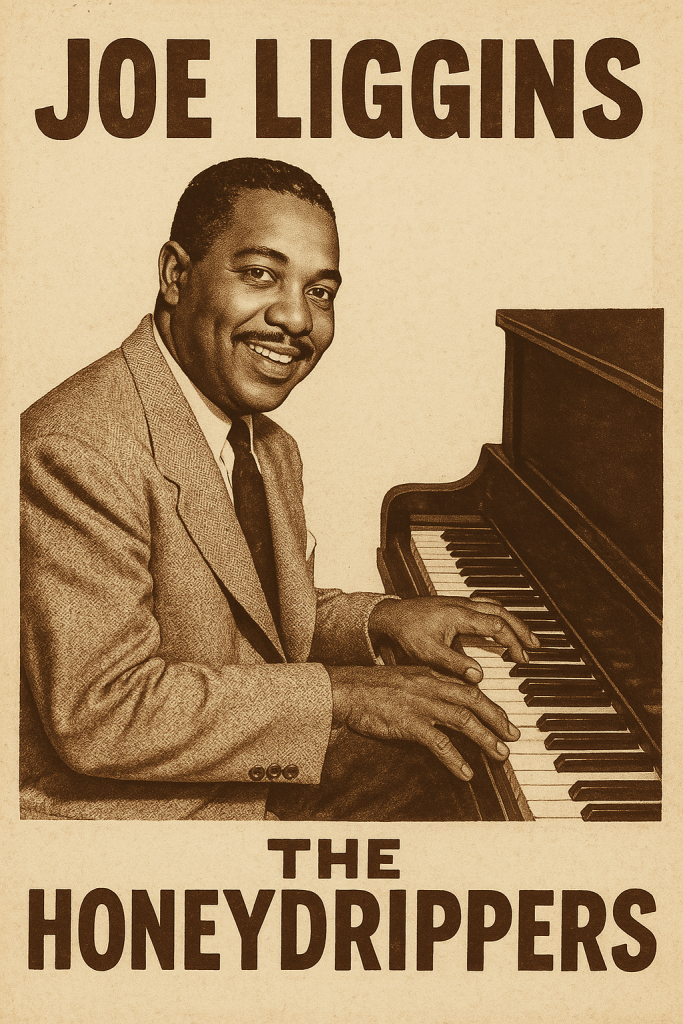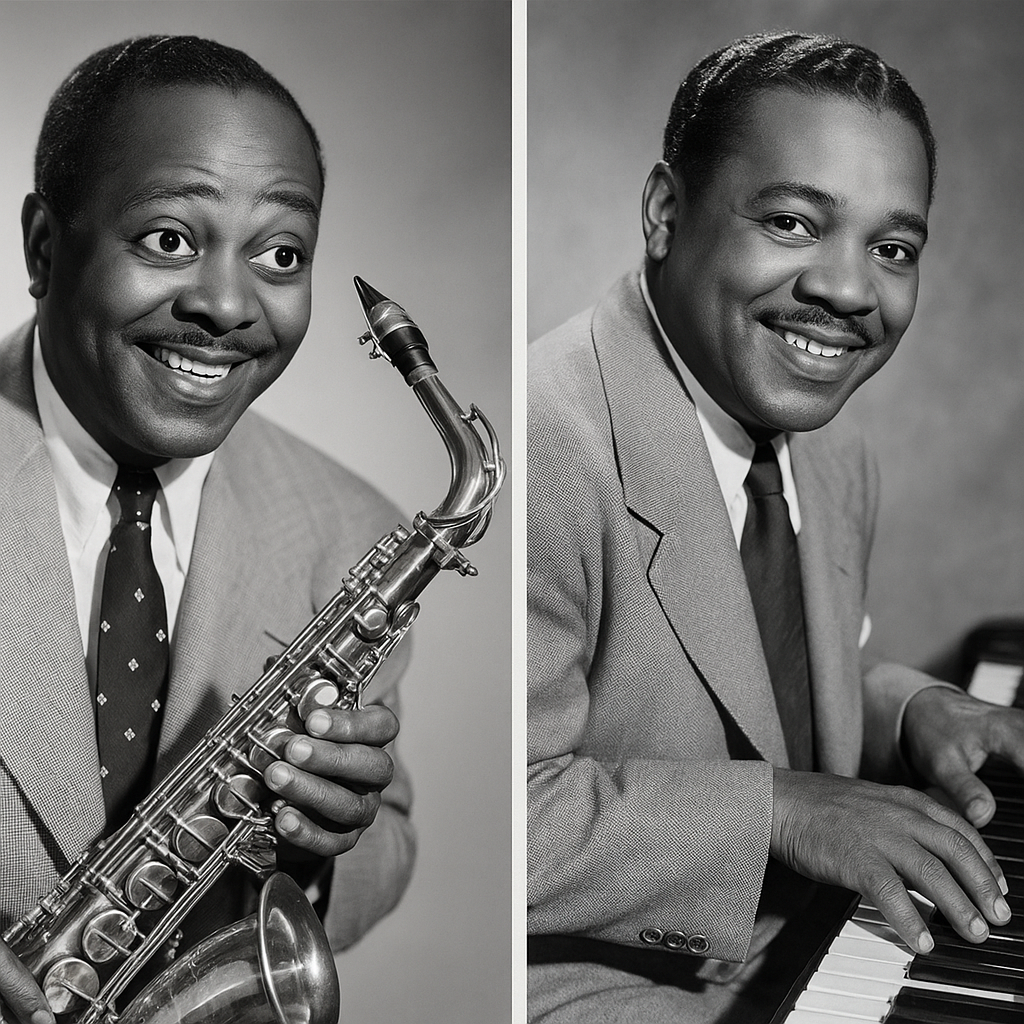Introduction: Forgotten or Just Overshadowed?
In 1945, Joe Liggins stunned America with The Honeydripper song, a record-breaking hit. This track, performed with the Honeydrippers band, dominated jukeboxes and became the biggest R&B hit of the 1940s The Honeydripper. Its massive success cemented Jump Blues as a cultural force. Yet decades later, many wonder: Was Joe Liggins overlooked in blues history?
Comparisons quickly arise. Louis Jordan vs Joe Liggins often fuels debate, since Jordan enjoyed greater fame. But why is Joe Liggins less known than Louis Jordan, despite Liggins’ groundbreaking achievements? Some believe history favored Jordan’s personality and showmanship. Others suggest forgotten blues musicians like Liggins were overshadowed by changing trends.
Still, his role is undeniable. Joe Liggins’ contribution to jump blues helped shape early rhythm and blues and influenced the future of rock and roll. His work bridged boogie-woogie influence, dance halls, and the California blues scene. Without him, West Coast Jump Blues might not have flourished as it did.
So, the central question remains clear. How did Joe Liggins shape early R&B and rock yet escape wider celebration?
To understand Liggins’ place, let’s first explore what made Jump Blues so influential.

What Made Jump Blues So Popular?
Jump Blues became the heartbeat of postwar America. Its upbeat energy, swinging horns, and catchy rhythms made it irresistible. In crowded bars and bustling dance halls, the music provided people with a chance to escape their daily struggles. Audiences filled the floors, and jukebox hits of the 1940s kept the sound alive in every corner.
At its foundation, Jump Blues combined the influence of boogie-woogie with swing jazz. Bands trimmed down the size of big orchestras but kept the lively groove. This shift made the music leaner, punchier, and perfect for dancing. Songs like “The Honeydripper” captured this spirit and proved that small combos could deliver massive hits. The style bridged the swing and jump blues crossover, offering music both stylish and raw.
Even more importantly, Jump Blues became a direct stepping stone to new genres. Its rhythm-driven energy shaped early rhythm and blues while inspiring later Rhythm & Blues pioneers. Musicians borrowed the thumping bass lines and bold saxophone riffs, which became central in rock and roll. Without Jump Blues, the blues roots of rock and roll would be incomplete. The sound created a blueprint followed by countless artists.
However, history hasn’t been equally kind to every performer. While Louis Jordan enjoyed lasting fame, forgotten R&B bandleaders like Joe Liggins struggled for recognition. His influence on the California blues scene helped define West Coast Jump Blues, yet his name is often missing from discussions. Despite this, his recordings reached a massive audience and shaped the evolution of popular music.
Therefore, appreciating Joe Liggins’ legacy requires looking beyond

Joe Liggins Breakthrough with The Honeydrippers
In 1945, Joe Liggins recorded his landmark single, a song that changed the course of music history. Backed by the Honeydrippers band, it stormed the charts and dominated jukeboxes across America. The record became the biggest R&B hit of the 1940s, The Honeydripper, holding the top spot for months. Crowds couldn’tcouldn’t resist its driving beat, catchy melody, and irresistible swing.
This success marked more than a personal triumph. It highlighted how Jump Blues could rival big-band swing and reach mass audiences. This record breaking track wasn’t just popular—it defined a cultural moment. In smoky dance halls, couples moved to the groove. On jukeboxes, the tune played endlessly, turning Liggins into a household name. For a time, he was at the forefront of the California blues scene, showing how California blues could rival any style nationwide.
Equally important, the song revealed the crossover power of Jump Blues. Its sound appealed to both jazz fans and blues enthusiasts. Furthermore, it inspired other musicians to experiment with rhythm-driven compositions. That influence carried forward, shaping early rhythm and blues and leaving echoes in rock and roll decades later. Without Liggins’ work, the blues roots of rock and roll would be missing a key piece.
Yet despite this achievement, Liggins’place in blues history as an overlooked artist remains troubling. While Louis Jordan received far more attention, the question persists: Why is Joe Liggins less known than Louis Jordan? The comparison between Louis Jordan and Joe Liggins continues to spark debate among music historians. Some marketing point, others to personality, but all agree his impact was undeniable.
Ultimately, The Honeydripper proved that Joe Liggins’Liggins’ contribution to jump blues was both revolutionary and enduring. His recording remains a landmark, demonstrating how overlooked musicians continue to shape the future of American music.
Before rock and roll ever ruled the airwaves, Jump Blues became the heartbeat of postwar
America. Its upbeat energy, swinging horns, and catchy rhythms made it irresistible. In crowded bars and bustling dance halls, the music provided people with a chance to escape their daily struggles. Audiences filled the floors, and jukebox hits of the 1940s kept the sound alive in every corner.
At its foundation, Jump Blues combined the influence of boogie-woogie with swing jazz. Bands trimmed down the size of big orchestras but kept the lively groove. This shift made the music leaner, punchier, and perfect for dancing. Songs like “The Honeydripper” captured this spirit and proved that small combos could deliver massive hits. The style bridged the swing and jump blues crossover, offering music both stylish and raw.
Even more importantly, Jump Blues became a direct stepping stone to new genres. Its rhythm-driven energy shaped early rhythm and blues while inspiring later Rhythm & Blues pioneers. Musicians borrowed the thumping bass lines and bold saxophone riffs, which became central in rock and roll. Without Jump Blues, the blues roots of rock and roll would be incomplete. The sound created a blueprint followed by countless artists.
However, history hasn’thasn’t been equally kind to every performer. While Louis Jordan enjoyed lasting fame, forgotten R&B bandleaders like Joe Liggins struggled for recognition. His influence on the California blues scene helped define West Coast Jump Blues, yet his name is often missing from discussions. Despite this, his recordings reached a massive audience and shaped the evolution of popular music.
Therefore, appreciating Joe Liggins’Liggins’ legacy requires looking beyond overshadowed artists.
To truly grasp his importance, one must first understand the profound cultural impact that Jump Blues had during the 1940

Joe Liggins vs. Louis Jordan: Fame and Overshadowing
When discussing Jump Blues, one comparison is almost unavoidable: Louis Jordan vs Joe Liggins. Both men shaped the sound of the 1940s, yet their legacies diverged sharply. Jordan remains a celebrated household name, while Liggins is often filed under blues history overlooked artists. This imbalance raises an important question: Was Joe Liggins overlooked in blues history?
Louis Jordan was a master of showmanship. His charisma, humor, and stage presence helped him dominate audiences and secure headlines. By contrast, Joe Liggins was more reserved. His focus leaned heavily on musicianship, arranging, and crafting polished songs. Although The Honeydripper song became the biggest R&B hit of the 1940s, fame favored Jordan’s personality-driven style.
Yet, the comparison is not about talent alone. Industry dynamics played a role in who succeeded and who faded. Record labels promoted Jordan relentlessly, ensuring his songs received radio play and placement on jukeboxes.
Meanwhile, Liggins, despite his massive hit, received far less marketing support. Consequently, his influence on early rhythm and blues was substantial but often under-credited.
Furthermore, Jordan’s output connected directly to comedy, dance, and entertainment, making him more accessible to broader audiences. Liggins, however, carved his place in the California blues scene, emphasizing musicianship and refinement. His band, the Honeydrippers, represented the smooth yet powerful sound of West Coast blues,which influenced countless performers.
Still, comparing the two shouldn’t diminish either man. Instead, it highlights how music history often favors one narrative over another. The continued question—why is Joe Liggins less known than Louis Jordan?—underscores the uneven recognition of pioneers.
While Jordan enjoyed fame, Joe Liggins’ legacy quietly shaped boogie-woogie influence, dance hall music 1940s, and ultimately the blues roots of rock and roll.
Chart Success and Cultural Impact
Joe Liggins made history with the song ” The Honeydripper, which dominated jukeboxes across America. The record topped charts for 18 weeks, a rare accomplishment for Jump Blues. Its success cemented the Honeydrippers band as pioneers in West Coast blues sound and early 1940s R&B hits.
Even more remarkably, The Honeydripper became one of the decade’s biggest jukebox hits of the 1940s. The track’s boogie-woogie influence inspired countless musicians who later shaped the rhythm and blues genre. Audiences packed dance halls, drawn by its irresistible swing and jump blues crossover energy. This infectious sound made Joe Liggins a central figure in early rhythm and blues.
Furthermore, his work influenced future legends of R&B and early rock and roll. Rhythm & Blues pioneers like Ray Charles and Little Richard carried echoes of Liggins’ arrangements. The blend of blues, swing, and danceable grooves showed how the blues roots of rock and roll were already emerging.
However, despite this success, Louis Jordan often receives more recognition in the history of blues music. The question remains: Louis Jordan vs Joe Liggins—who truly defined the era? Many consider Liggins a forgotten blues musician. Others argue his legacy deserves equal attention.
Despite this chart-topping success, Joe Liggins’ legacy remains inconsistently recognized in discussions of overlooked blues history.
Why Joe Liggins Gets Overlooked
Joe Liggins was a pioneer of Jump Blues, yet his recognition remains surprisingly limited. Overshadowed by dynamic showmen like Louis Jordan and Cab Calloway, his quieter stage presence drew less attention. Still, his music carried the same energy, primarily through “The Honeydripper,” one of the biggest 1940s R&B hits.
However, regional bias also played a role. West Coast Jump Blues musicians, like Liggins, were often neglected in comparison to their Southern and New York counterparts. Audiences and critics focused on the East Coast scene, leaving the California blues scene less celebrated. Consequently, the Honeydrippers band received fewer mentions in blues history despite their immense popularity in jukebox hits of the 1940s.
Another factor was limited crossover into film and mainstream media. While Louis Jordan appeared in short films, Joe Liggins rarely had the same opportunities. Without strong visual promotion, his music could not spread as widely as other rhythm & blues pioneers. This lack of exposure left him absent from broader discussions on the roots of rock and roll.
Moreover, Liggins lacked the myth-making appeal surrounding other blues musicians. Legends often elevate artists into icons, but Liggins was primarily remembered for his chart topping hit. Yet his contributions to early rhythm and blues, swing, and jump blues crossover, as well as the boogie-woogie influence, remain undeniable. His work shaped the dance hall music of the 1940s and fueled the rise of rock and roll.
Still, many forgotten blues musicians share his fate. Joe Liggins’ legacy deserves renewed appreciation, as he helped define West Coast Jump Blues.
Though overlooked, his influence continues through modern musicians who carry echoes of his style forward.
Liggins ‘ Legacy in Modern Music
Joe Liggins left a deep mark on Jump Blues, even if audiences don’t always remember his name. His work with the Honeydrippers band influenced countless musicians. The Honeydripper song became one of the biggest R&B hits of the 1940s, shaping the history of rhythm and blues.
Although Louis Jordan and Joe Liggins are often compared, Liggins developed a unique voice in West Coast Jump Blues. His boogie-woogie influence carried over into early rhythm and blues, leaving its mark in doo-wop and early rock and roll. From dance hall music of the 1940s to jukebox hits, his sound crossed boundaries.
Moreover, forgotten blues musicians like Liggins remind us of how uner-reconized artists have shaped the foundation of modern music. His arrangements appear in crossover songs between swing and jump blues, as well as the California blues scene. Many rhythm & blues pioneers respected him, even if mainstream audiences didn’t always remember his contributions.
So, where does that leave us when considering his place in the history of blues music? Joe Liggins’ legacy endures through the roots of early rock, his overlooked artistry, and the timeless pulse of Jump Blues. His influence endures in every crossover rhythm that bridges the blues and rock.
Reassessing Joe Liggins in Blues History
Joe Liggins deserves far more attention in blues history than he usually receives. His Jump Blues style, especially as showcased in the song “The Honeydripper,” shaped the sound of 1940s R&B hits. Yet, many forgotten blues musicians, like Liggins, remain overshadowed, despite their significant influence on early rhythm and blues.
Arguments in favor of restoring his recognition are strong. The Honeydrippers band created one of the biggest R&B hits of the 1940s, yet debates between Louis Jordan and Joe Liggins usually downplay his role. Why is Joe Liggins less known than Louis Jordan, despite his massive jukebox success? Fans must ask whether blues history overlooked artists like him due to geographical, temporal, or music industry biases.
Notably, West Coast Jump Blues played a critical role in the broader story. Joe Liggins’ West Coast blues influence brought a boogie-woogie influence and a crossover of swing and jump blues, fueling dance hall music in 1940s California. These forgotten R&B bandleaders connected the blues roots of rock and roll, influencing rhythm & blues pioneers who followed. His contribution to jump blues helped shape early R&B and rock in lasting ways.
Finally, let’s consider what action modern listeners can take. Fans and historians should revisit Joe Liggins’ catalog, reassess his legacy, and rediscover how Joe Liggins shaped early R&B and rock. Listening again highlights his role as a key figure in blues history, one that artists have overlooked.
Reassessing Joe Liggins’ legacy ensures the California blues scene and his rhythm & blues pioneers are never forgotten.
Conclusion: Keep the Honeydripper Alive
Joe Liggins deserves recognition as one of Jump Blues’ true innovators. His Honeydrippers band created unforgettable dance hall energy, and the song “The Honeydripper” became the biggest R&B hit of the 1940s. Yet despite his success, he remains overshadowed in blues history. When people discuss Louis Jordan vs Joe Liggins, Jordan’s name often dominates, leaving Liggins unfairly overlooked.
However, his influence on West Coast Jump Blues and early rhythm and blues cannot be ignored. His boogie-woogie influence shaped a sound that directly inspired rock and roll. Forgotten blues musicians like Liggins remind us how history often favors some while neglecting others.
Therefore, the legacy of Joe Liggins should not fade into silence. Support his place among rhythm & blues pioneers by listening to his recordings, sharing his story, and exploring the work of overlooked artists. By keeping The Honeydripper alive, we preserve the history of the blues for generations to come.
